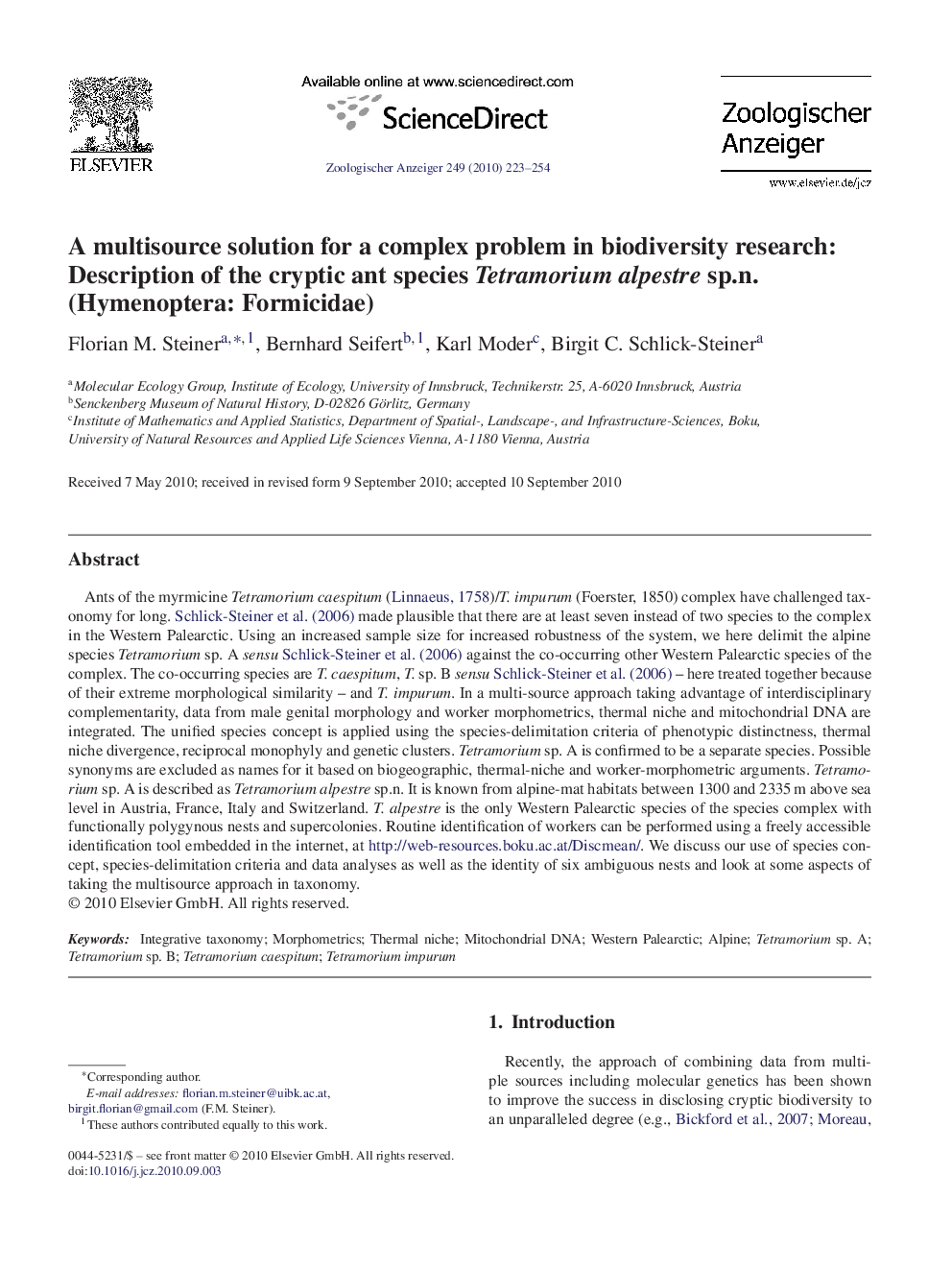| Article ID | Journal | Published Year | Pages | File Type |
|---|---|---|---|---|
| 2790859 | Zoologischer Anzeiger - A Journal of Comparative Zoology | 2010 | 32 Pages |
Ants of the myrmicine Tetramorium caespitum ( Linnaeus, 1758)/T. impurum (Foerster, 1850) complex have challenged taxonomy for long. Schlick-Steiner et al. (2006) made plausible that there are at least seven instead of two species to the complex in the Western Palearctic. Using an increased sample size for increased robustness of the system, we here delimit the alpine species Tetramorium sp. A sensu Schlick-Steiner et al. (2006) against the co-occurring other Western Palearctic species of the complex. The co-occurring species are T. caespitum, T. sp. B sensu Schlick-Steiner et al. (2006) – here treated together because of their extreme morphological similarity – and T. impurum. In a multi-source approach taking advantage of interdisciplinary complementarity, data from male genital morphology and worker morphometrics, thermal niche and mitochondrial DNA are integrated. The unified species concept is applied using the species-delimitation criteria of phenotypic distinctness, thermal niche divergence, reciprocal monophyly and genetic clusters. Tetramorium sp. A is confirmed to be a separate species. Possible synonyms are excluded as names for it based on biogeographic, thermal-niche and worker-morphometric arguments. Tetramorium sp. A is described as Tetramorium alpestre sp.n. It is known from alpine-mat habitats between 1300 and 2335 m above sea level in Austria, France, Italy and Switzerland. T. alpestre is the only Western Palearctic species of the species complex with functionally polygynous nests and supercolonies. Routine identification of workers can be performed using a freely accessible identification tool embedded in the internet, at http://web-resources.boku.ac.at/Discmean/. We discuss our use of species concept, species-delimitation criteria and data analyses as well as the identity of six ambiguous nests and look at some aspects of taking the multisource approach in taxonomy.
